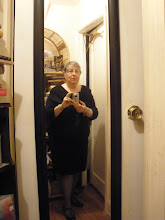(Originally posted 6 June, 2008)
Journals, or blogs, no matter how frequently or infrequently posted to, are one of the great joys of a conscious life. (Having said that, I suppose I should explain what I mean by a conscious life. To me, living a conscious life means not taking for granted the things people tell me. It means examining my beliefs to make sure they are mine, and not just handed down to me by parents, teachers, etc. It means thinking about my views on things, and putting my beliefs and values into action.)
Private or public, they are a place to record the minutiae of daily life; reflect on insights; note memorable quotations, passages from books, poems, or songs; mark occasions; track progress on personal (or work) projects; and rant, rave, or otherwise work out solutions to problems and coherent opinions on troubling issues.
Marvelously flexible, paper journals can be (depending on their size) tossed into a purse, briefcase, or luggage; tucked into a pocket; or hidden in a drawer (or under a pillow, or on a shelf). They can be hard-bound, spiral-bound, or custom-bound; cloth-covered, paper-covered, plastic-covered, or cardboard-covered; lined or unlined; large or small; expensive or inexpensive – whatever suits your fancy!
Blogs, while not quite as portable yet as paper journals, have other advantages: ease of editing; legibility; ease of sharing (if you choose to share) over large geographical areas; ease of incorporating research results, pictures, and articles from the World Wide Web; and ease of storage (if you back up your blog, thumb drives and CD-ROMs take up a lot less space than physical notebooks).
So, after you decide whether to use paper or to go online, the next question is what to fill your journal with. In either case, the possibilities are almost infinite. I’ve filled my paper journals with photos, ticket stubs, cards and letters, drafts of stories, poems, laundry lists, reminders, and quotations; and my online ones with news, photos, memories, short fiction of the fannish variety, reminders, birthday shout-outs, and quotations.
There are a number of books on journal-keeping, which offer a treasure trove of ideas, journal rituals, pointers, and tips. Two of the best books of this kind are Tristine Rainer’s The New Diary, and Kathleen Adams’ Journal to the Self. (There is another classic in the field, Ira Progroff’s At a Journal Workshop, but that introduces a whole, complex system for organizing and keeping a journal in sections, which is a bit beyond the scope of this article.) Both are inspirational and, with Natalie Goldberg’s Writing Down the Bones, some pre-Internet books on researching, and a number of excellent books from Writers Digest, form the basis of my writing library. A lot of what I learned about making a paper journal truly your own has come from these two books.
To my mind, there is one huge advantage to online journal-keeping: its social aspect. While I admit to still being wary of putting anything online that I would not want to see blazoned as a headline in my local newspaper, there are social aspects that are just too alluring to resist, including getting photography advice from professional photographers; met writers whose work I adore; gotten excellent writing advice from editors and writers; had superb support systems when the lemons life handed me stubbornly refused to turn into lemonade; had fun and learned about friends with the odd meme; gotten information about places that tourists might miss in a town while I was still planning my itinerary; and found a whole new group of online acquaintances with whom journal-keeping was just one thing I had in common.
Now I want to note the greatest secret of journal-keeping: while it is an ongoing commitment, the one thing that there are no hard and fast rules about is the frequency of posting! I’ve heard so many people say some variation of “I’d love to do that, but I don’t have the time to write every day.” You don’t have to write every day! Some folks do, of course, but your frequency of posting is totally up to you. Julia Cameron, in her excellent twelve-week course, The Artist’s Way, recommends doing three pages each morning, which I did when I did the course. In real life, however, my journal-keeping varies wildly. During the school year, for example, when I get up absurdly early, I may only make one or two catch-up entries in any given month. If I’m writing a story, or working through a difficult real-life situation, I might go through a whole notebook in that span of time.
Again, the key is to make your journal your own by amassing a “tool box” of tips and tricks, and using them as needed.
If you thought about keeping a journal, but decided against it, what stopped you? If you choose to rethink the decision, what are some creative solutions to the challenges?
If you do keep a journal, do you use paper, post online, or some combination of the two? Are you posting as much (or as little) as you want? What can you think of to facilitate doing so?


No comments:
Post a Comment